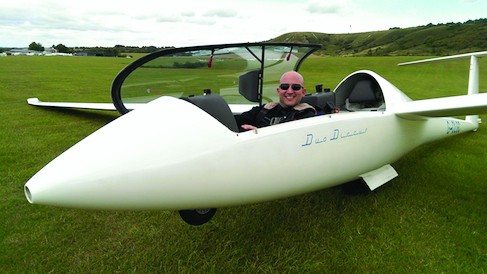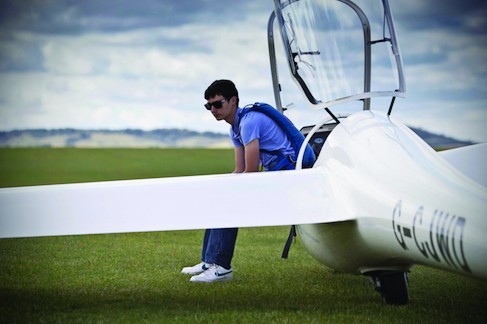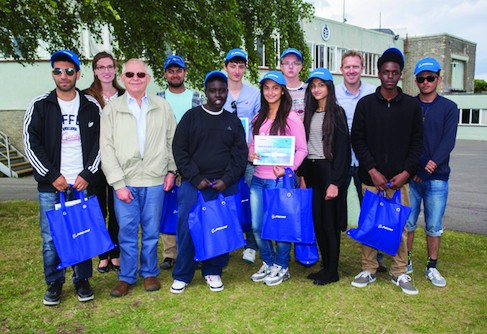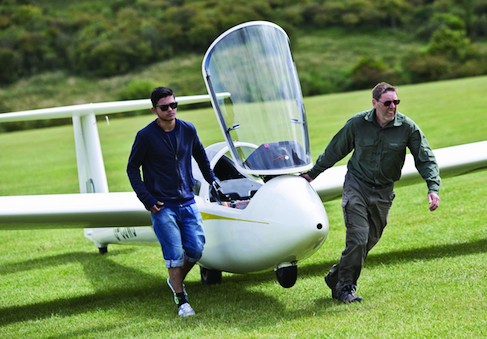There’s a lot to recommend being a member of The Engineer’s editorial team and as you can see from the big grin on my face, taking a flight in a glider is definitely one of them.

The winch launch itself is an experience that I cannot recommend highly enough, given the rapid speed and relatively steep angle of ascent.
The near-silent flight that followed over Dunstable Downs is similarly thrilling. With nothing but naturally occurring currents of air keeping the aircraft aloft, pilot Andrew Perkins offered a glimpse into a world that isn’t as exclusive as many might assume.
Perkins is pilot with British Airways and director at The Air League, an organisation formed in 1909 with a very simple mission: to encourage the nation to appreciate the vital importance of air superiority.
It does this in a number of ways, particularly through scholarships and bursaries that encompass gliding, powered flight, and engineering.
Perkins and his colleagues at Air League noticed that no applications were being made for scholarships from candidates living in inner city areas, so they decided to do something about it.
It was from this that the Gliding to Solo Scholarship scheme was born and on Wednesday this week The Engineer visited the London Gliding Club in Dunstable to help celebrate the achievements of the scheme’s latest intake from three schools in Hackney.

Now in its second year, this leg of the Boeing-funded Gliding to Solo Scholarship scheme saw nine students aged between 15 and 18 from the Academy of Excellence, Haggerston School and City Academy take part in an intensive two-week gliding course.
Perkins added that the scheme is also being run through the Air League with BA across the UK and that plans are afoot to extend its reach to the Gatwick area of London where BA is stationed.
It all starts with a presentation in school followed by a competitive process that goes like this:
- 20 pupils take part in a Taster Day
- 10 pupils visit BA at Heathrow for selection
- Three pupils per school taken forward for the scholarship.
Perkins explained that the Taster Day involves a trial lesson at a gliding club, lasting between 15 and 20 minutes that is followed by a session looking at selection techniques.
He added that Selection Day uses human resources teams and facilities at BA, with assistance from Boeing and Linklater, to run a selection process that includes a short test, an interview, group exercise and presentation on career opportunities and guided tour of respective facilities.
This is designed to give the students a ‘taste of what to expect in a competitive selection process and also an opportunity to see what a large corporate workplace is like.’

But what did the pupils in Dunstable know about flying and the aviation industry prior to winning their places on the scholarship? The impression given was – with one notable exception – that they are fully aware of the industry, which is to be expected given that the world’s airlines criss-cross their city on a daily basis. They were, however, vague on the details, and flying was certainly something they never thought they’d be able to do until they were made aware of the two-week scholarship.
One pupil, whose teachers probably won’t appreciate this comment, said that his Academy was good for maths, English and sciences but that a career path in aviation is ‘unheard of in my school’.
Out of the four pupils I spoke to, three fully intended to follow a technical path into aviation with the fourth thinking a non-technical role may be better suited to their needs.
A quick Google search indicates that there is an Air Training Corps squadron in Hackney, the 444 Squadron of Shoreditch to be precise, which offers its cadets a full range of flying experiences. Getting this kind of opportunity onto young people’s radars may be a step forward in helping the UK maintain its global standing in aviation and aerospace whilst providing a whole range of softer skills required in the wider world.
That said, Perkins and his colleagues at The Air League have clearly made gains in their aim to redress inequalities gaining access to aviation and the myriad of opportunities that exist within the industry. Boeing, British Airways, and Linklaters are to be applauded too in helping to unlock the potential of inner city youth.
The final word goes to Andrew Brookes, chief executive of The Air League, who told The Engineer: ‘Our aim is to introduce schools in inner city areas around the UK to the challenge and the excitement of aviation in general – that’s flying, engineering. The whole panoply of aerospace and aviation activities and engineering is crucial in that as there’s much more to getting an aircraft airborne than just the aircrew – it’s the engineers and support crew as well.’











National Gas receives funding to develop Gravitricity underground hydrogen storage system
One single rock salt mine - Winsford - has 23 <i>MILLION </i>cubic metres of void and even allowing for 10% of that void set aside for hazardous waste...